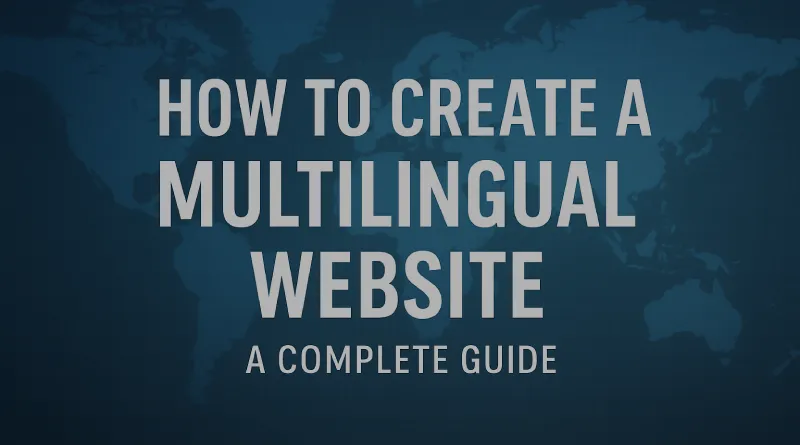How to Create a Multilingual Website: A Complete Guide
In today’s globalized digital era, businesses are no longer limited to serving just their local markets. With the internet bridging geographical barriers, your website can easily attract visitors from different parts of the world. However, to truly connect with a diverse audience, language plays a crucial role. That’s where creating a multilingual website becomes essential. A multilingual website not only improves user experience but also boosts your brand’s credibility and global reach.
Why Go Multilingual?
A multilingual website ensures that your content is accessible and understandable to users who speak different languages. According to studies, visitors are more likely to engage with and trust a brand that communicates in their native language. In fact, many customers prefer buying products from websites that offer information in their own language. So, if you’re looking to expand your reach and build stronger relationships with international customers, going multilingual is a smart move.
Key Steps to Creating a Multilingual Website
1. Define Your Target Audience
Start by identifying the countries and regions you want to target. This will help you decide which languages to include on your website. For example, if you want to cater to users in Europe, adding French, Spanish, and German may be beneficial.
2. Choose the Right Platform and Tools
Most modern content management systems (CMS) like WordPress, Drupal, or Joomla offer multilingual plugins or built-in features. Plugins such as WPML or Polylang (for WordPress) allow you to manage translations efficiently. Make sure your CMS supports easy language switching and proper URL structuring for SEO.
3. Focus on Accurate Translation
Automated tools like Google Translate may be convenient, but they often fail to capture cultural nuances. For professional results, invest in human translation services or hire native speakers who can localize content. Localization goes beyond words; it considers cultural context, idioms, and even imagery.
4. Design User-Friendly Navigation
Your website should make it simple for visitors to switch between languages. Common practices include adding a visible language selector in the header or footer. Ensure that language options are written in the native language (e.g., “Español” instead of “Spanish”) for better clarity.
5. Implement SEO Best Practices
Multilingual SEO is vital to ensure your website ranks well in different regions. Use hreflang tags to indicate language versions of your pages to search engines. Additionally, optimize keywords in each target language and ensure proper URL structures, such as example.com/fr/ for French.
6. Maintain Consistency Across Versions
Once your multilingual website is live, keep all language versions updated. Consistency in content, design, and functionality builds trust among international users. A delay in updating one version may create confusion or reduce credibility.
Benefits of a Multilingual Website
- Wider Reach : Attract audiences from multiple regions.
- Improved User Experience : Visitors feel valued when addressed in their language.
- Higher Conversions : Localized content can influence buying decisions.
- Brand Credibility : A global presence enhances your reputation.
Final Thoughts
Creating a multilingual website requires careful planning, investment, and attention to detail, but the rewards are well worth it. By breaking the language barrier, you not only make your content more inclusive but also open doors to international growth. Whether you’re an e-commerce business, a service provider, or a blogger, going multilingual ensures that your message resonates with audiences worldwide.
Disclaimer
The information presented in this blog is derived from publicly available sources for general use, including any cited references. While we strive to mention credible sources whenever possible, Digital Marketing Company in Mumbai does not guarantee the accuracy of the information provided in any way. This article is intended solely for general informational purposes. It should be understood that it does not constitute legal advice and does not aim to serve as such. If any individual(s) make decisions based on the information in this article without verifying the facts, we explicitly reject any liability that may arise as a result. We recommend that readers seek separate guidance regarding any specific information provided here.

